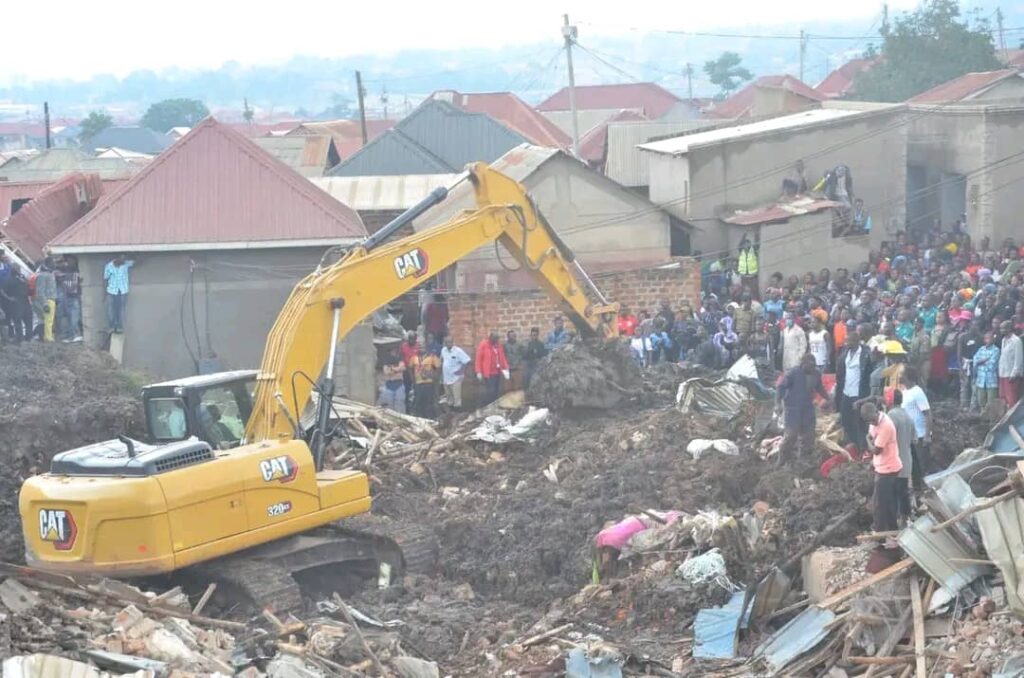PROF. BAGIRE VINCENT (Strategy Scholar and active lay leader).
For the reader who is unaware of where my story arises from, Uganda recently experienced a disaster. Kitezi, a landfill area where the City Council Authorities dump garbage collapsed. Lives were lost as well as millions of property and the public image of the country was or is still in jeopardy.

Waste management is costly for all municipal authorities. Waste handling is equally a challenge to urban dwellers at family and institutional levels. Many schools, hospitals and public markets face the same. As I have written in many previous Issues of Leadership, management is a broad spectrum of doing things in organizations. For example, handling materials and inventory is as critical as managing finances or human resources. Waste has been defined and seen as unwanted materials. They are the output of processes composing of leftovers that have to be discarded. Some waste is hazardous to human life and must be handled carefully.
Other wastes will rot away into the earth. Other materials have become a public nuisance as they do not decompose and remain destructive to the soils. Wastes of human bodies namely: urine and feacal material cannot be delayed in public. Others such as: bottles, metals, oils, medicines, peelings and packages are equally cumulative in the community and must be discarded diligently. Managing waste is therefore a critical organizational activity that I wish to highlight in this Issue. The disaster at Kitezi has raised critical questions and debates. I wish to look at managing waste from two angles namely: waste as business and technical waste handling. In the former aspect, waste is no longer unwanted material. It is a source of income and livelihood. Waste has value chains from which businesses can spur, right from collection, sorting, transportation, packing, processing, packaging and transformation into products.
Waste can be raw materials or direct products from a source. The thousands of bottles thrown all over the country, the urine that communities discard in millions of liters, and the domestic materials that households wish to throw away daily are all materials for business. There are RRR innovations – Resource Recovery and Reuse that communities must get into. I urge catholic youth groups countrywide to adopt this model in response to Pope Francis’ call in Laudato Si – the ministry of protecting the earth, our common home.
Schools have been urged not to waste urine, feaces and peelings. These are sources of biogas that will subsidize heavy electricity bills. The bi-product is a quality input for fertilizers. In managing waste, all the functions of management that I have written about will prevail, such as: planning, controlling, setting up structures, training staff, accounting, coordination, procurement, customer identification and market promotion. These are critical issues in the technical processes of handling waste. Waste as a business model requires institutionalization across all communities in the country.
Agro waste is easily recoverable into the same agro chains. With colleagues in academia, we have carried out research and published papers and policy lines on this perspective. There is of course less uptake of research outputs in our country especially where political clout seems to matter more. In the value chains I illustrated earlier, it may not have been necessary to accumulate the earth at Kitezi.
The waste would have been handled at designated collection points, sorted and transported to different factory setups for business. For instance, all bio gradable materials should end up in factories of fertilizers; plastics into processing factories for various products, papers are recyclable; there are numerous products like bags, briquettes, papers and blocks among others that are simple to make in household level factory processes.
The disaster at Kitezi, from my studentship of strategy, is timely as a learning trigger. It is in such times of critical change that strategies are conceived. We have a national outcry of unemployment among the youth. The establishments by investors that we read about are inadequate to create enough jobs to absorb them. They are highly digitized and require only a few technical personnel.
A national transformation strategy should be crafted around the possibilities of community-level factory establishments, many of which may still be labour-intensive for years to come. These will go a long way to not only create jobs but also make import substitution of many products that are made in similar establishments all over China that end up in the country.
Possibly, let me narrow down the policy brief. At times, ideas that require the government to act will lie for ages due to competing priorities. Could I challenge the Church leadership, through investment committees of the Laity councils to consider these ideas? We have observed in our church meetings the increasing absence of youth. They are unemployed and possibly unable to buy basics to come to Church. In the Cardinal Cardjin spirit of Catholic action that gave birth to Young Christian Students (YCS) and Young Catholic Workers (YCW) movements, could we remodel taking Christ to the communities where the youth are losing hope and sensitize them to rebuild their zeal as they innovate through waste business value chains? Certainly, there are many possible sources of funding to support these initiatives locally and externally.
Let us take baby steps into this; for Laudato Si, job creation, skilling youth and broadly making them into vibrant catholic action in their ministry for their livelihood as well as for the benefit of the church as a whole in her mission.
















